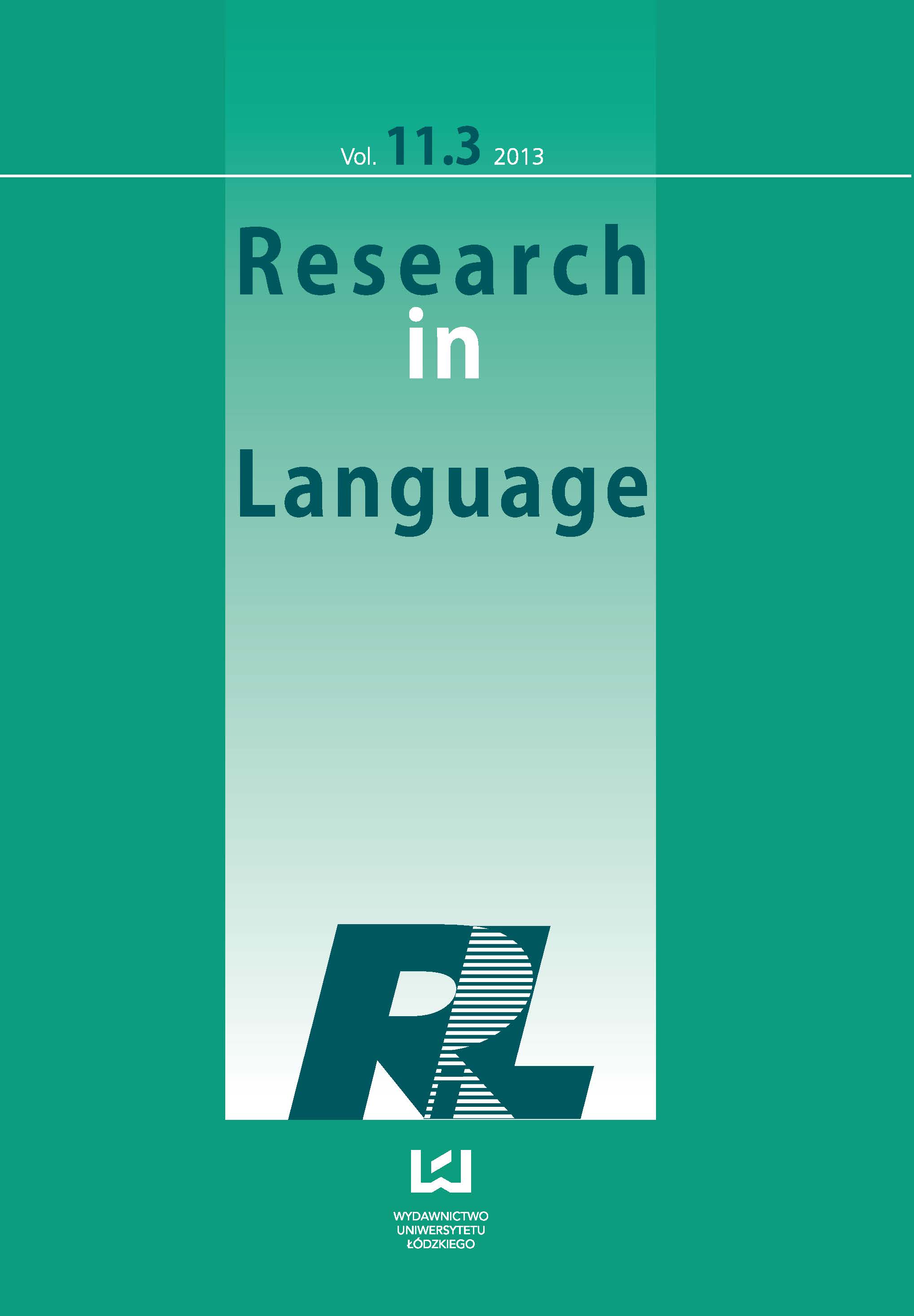The Role of Syntactic Stylistic Means in Expressing the Emotion Term Love
DOI:
https://doi.org/10.2478/v10015-012-0016-6Keywords:
emotion term LOVE, linguistic and extralinguistic means of love manifestation, expressive syntax, fictionAbstract
Love as one of important feelings in human emotional, cognitive and social life has always attracted attention of the researchers: psychologists, linguists, philosophers, ethnologists, etc. We may speak about extralinguistic and linguistic ways of love manifestation. To linguistic ones belong, of course, stylistic means, which include lexical, syntactic, phonetic, and semasiological level. The author focuses on lexical-syntactical means of expressing love in two Slavic languages, Czech and Slovak, using linguocognitive and cultural approach. This research is inspired by the GRID project, which aimed at study of 24 emotion terms in 35 languages.
References
Components of Emotional Meaning. A Sourcebook (2013). Fontaine, Johnny, Scherer, Klaus R., Soriano, Cristina (eds.). Oxford, Oxford University Press, UK.
Google Scholar
Frijda, Nico H. (1986). The Emotions. Cambridge University Press, Cambridge, UK.
Google Scholar
Кyseliuk, N.P. (2007). "Syntactic means of expressing emotion "joy" (in modern English"). Language and culture, iss. 9, vol. VI (94), 146-150 [in Russian].
Google Scholar
Likhareva, Irina (1982). Interrelations of prosodic, lexical and lexico-grammatical means of expressing modal meanings in English (based on phrases expressing certainty and doubt. Synopsis for PhD thesis. Moscow [in Russian].
Google Scholar
Nakonečný, Milan (2000). Lidské emoce. Academia Praha, Czech Republic. [in Czech].
Google Scholar
Nikonova, Vera (2008). Conceptual space of the tragic in the plays by Shakespeare: cognitive-poetic analysis. Synopsis for thesis of the DrSc. dissertation. Kiev National Linguistic University [in Russian].
Google Scholar
Оrtoni, Andrew, Clore, Gerald L., Collins, Allan (1988). The Cognitive Structure of Emotions. Cambridge University Press, Cambridge, UK.
Google Scholar
Panasenko, Nataliya (2013). "Czech and Slovak family patterns and family values in historical, social and cultural context". Journal of Comparative Family Studies. Alberta: Un-ty of Calgary. Vol. XXXIV, No 1, January-February, 79-98.
Google Scholar
Panasenko, Nataliya I. (2009). "Linguistic and extralinguistic means of expressing feelings and emotions in languages with different structures". Studia Germanica et Romanica. Scholarly papers of Donetsk National Un-ty, iss. 6, No 1, 89-108 [in Russian].
Google Scholar
Panasenko, Nataliya (2012). "Linguistic markers of emotional concept Love in literary texts". US-China Foreign Language. April, vol. 10, No. 4, 1067-1084.
Google Scholar
Panasenko, Nataliya, Démuthová, Slavka, Ručková, Gabriela, Varečková, L'ubica (2012). "Cross-cultural study of love evaluation and display by Slovaks and Czechs". Humanities across the Borders: [collection of papers / editors-in-chief O.L. Byessonova, N.I. Panasenko]. Donetsk-Trnava: DonNU, , 253-282.
Google Scholar
Panasenko, Nataliya I., Krivonovska, Larisa L. (1983). "Intonational and grammatical means of expressing modal meanings of assurance/ uncertainty in direct speech". Foreign Philology, № 72, Lviv, 56-64 [in Ukrainian].
Google Scholar
Panasenko, Nataliya, Trnka, Andrej, Petranová, Dana, Magál, Slavomír (2013). "Bilingual analysis of LOVE and HATRED emotional markers (SPSS-based approach)". Proceedings of the 3rd Workshop on Sentiment Analysis where AI meets Psychology (SAAIP 2013), IJCNLP 2013, Nagoya, Japan, October 14, 15-23.
Google Scholar
Rozhkova, Galina I. (1974). Perception of Emotional Intonations. A Thesis for the Scholarly Degree of Candidate of Psychology. Moscow. [in Russian].
Google Scholar
Downloads
Published
How to Cite
Issue
Section
License

This work is licensed under a Creative Commons Attribution-NonCommercial-NoDerivatives 4.0 International License.










